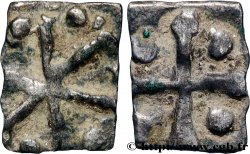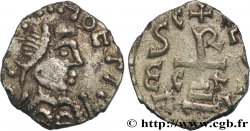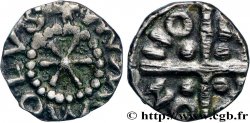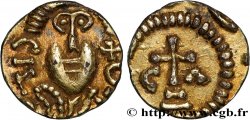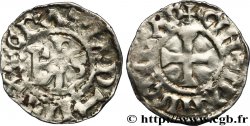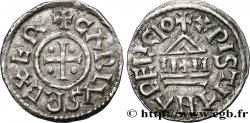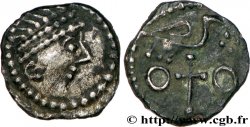bmv_298121 - CHALON-SUR-SAÔNE (CABILONNUM) - Saône-et-Loire Triens, monétaire BAVDOMERE
Not available.
Item sold on our e-shop (2017)
Price : 2 000.00 €
Item sold on our e-shop (2017)
Price : 2 000.00 €
Type : Triens, monétaire BAVDOMERE
Date: s.m.
Mint name / Town : 71 - Chalon-sur-Saône
Metal : gold
Diameter : 13 mm
Orientation dies : 6 h.
Weight : 1,26 g.
Rarity : R3
Coments on the condition:
Triens sur un flan un peu court, mais régulier avec les types de droit et de revers complet, mais de frappe défectueuse. Les coins utilisés étaient probablement rouillés
Predigree :
Cet exemplaire provient de la collection L. G. ; il a été acheté le 27 octobre 1941
Obverse
Obverse legend : + CABILO - NO FIT.
Obverse description : Buste diadémé à droite, manteau avec anneau d’attache à l’angle gauche et globules à l’angle droit ; légende autour.
Reverse
Reverse legend : + BAVDOMERE (MONETARIVS).
Reverse description : Croix latine sur deux degrés posés sur un globe, accostée de CA, dans une couronne végétale ; légende autour et listel.
Commentary
Pour le monétaire BAUDOMERE, les auteurs du MONETA n’ont étudié qu’un seul exemplaire, le Belfort n° 1144, conservé au musée de Chalon-sur-Saône. Notre exemplaire s’en distingue par la légende qui commence à midi et non pas à six heures, mais aussi par le type de revers, avec une croix posée sur un globe et deux degrés alors que le Belfort n° 1144 a une croix chrismée à gauche accostée de C-A rétograde et renversé. Notre exemplaire semble avoir MONETARIVS en plus de BAVDOMERE au revers.
Bien que ce monnayage ait été largement étudié, cet exemplaire semble venir compléter le corpus !.
For the BAUDOMERE coin, the authors of MONETA studied only one example, Belfort No. 1144, preserved at the Chalon-sur-Saône museum. Our example is distinguished by the legend which begins at noon and not at six o'clock, but also by the type of reverse, with a cross placed on a globe and two degrees while Belfort No. 1144 has a chrismated cross on the left flanked by CA retograde and inverted. Our example seems to have MONETARIVS in addition to BAVDOMERE on the reverse. Although this coinage has been widely studied, this example seems to complete the corpus!
Bien que ce monnayage ait été largement étudié, cet exemplaire semble venir compléter le corpus !.
For the BAUDOMERE coin, the authors of MONETA studied only one example, Belfort No. 1144, preserved at the Chalon-sur-Saône museum. Our example is distinguished by the legend which begins at noon and not at six o'clock, but also by the type of reverse, with a cross placed on a globe and two degrees while Belfort No. 1144 has a chrismated cross on the left flanked by CA retograde and inverted. Our example seems to have MONETARIVS in addition to BAVDOMERE on the reverse. Although this coinage has been widely studied, this example seems to complete the corpus!







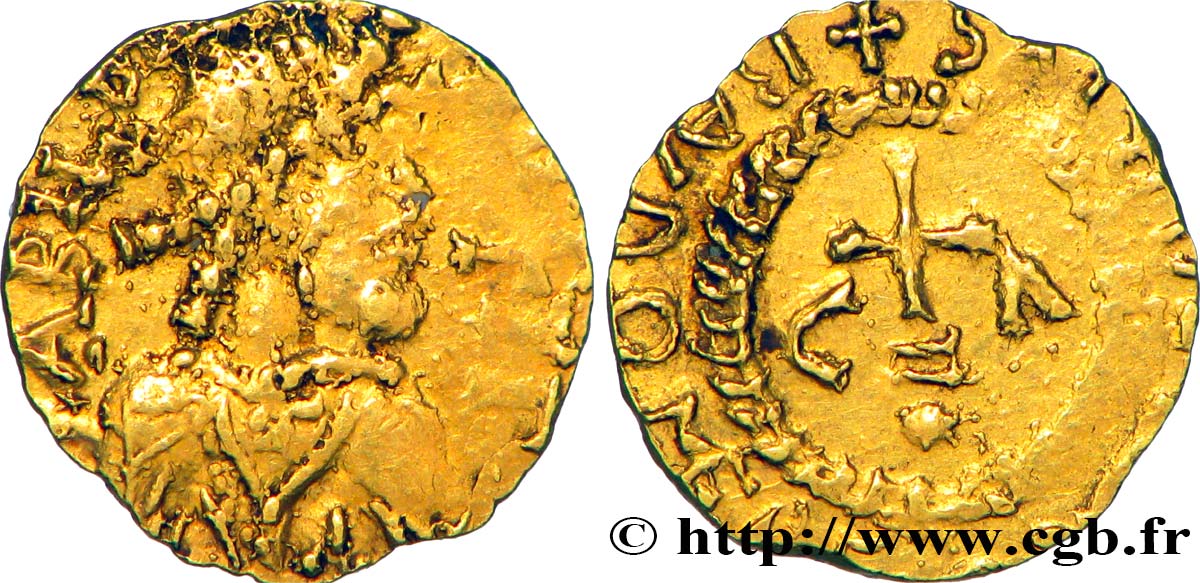
 Report a mistake
Report a mistake Print the page
Print the page Share my selection
Share my selection Ask a question
Ask a question Consign / sell
Consign / sell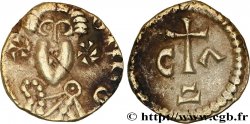
 Full data
Full data